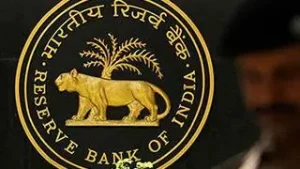Subscribe
We explore a topic that’s unusual for us—high-yield dividend stocks! While yield isn’t our focus, we know many investors crave reliable income. So, how can you spot a high-yielder that won’t burn you? Mike shares his favorite picks, how to separate safe income from risky traps, and why the story behind the yield matters less than the numbers.
You’ll Learn
Yield Isn’t a Free Lunch
A high yield can look attractive, but it often signals something’s wrong. Mike breaks down why it’s not enough to see a big payout—you need to understand why it’s there.
-
Companies don’t offer 7–12% yields without a reason.
-
A high yield often comes with risks: slowing growth, excessive debt, or declining cash flow.
-
The higher the yield, the deeper your due diligence needs to be.
What Counts as a High Yield Today
We set the threshold at 5%—but that can vary by market conditions.
-
In bull markets, even a 4.5% yield could be considered high.
-
During downturns, safe blue chips can temporarily offer high yields due to falling stock prices.
How to Spot a Safe High-Yield
You’ll need more than a good story—look at the company’s fundamentals.
-
Examine the Dividend Triangle: revenue, earnings, and dividend growth.
-
Check free cash flow, payout ratios, and debt levels.
-
Always give more weight to numbers than to the narrative.
Mike’s Favorite High-Yielders
These companies stand out for combining strong fundamentals with generous income.
-
AllianceBernstein (AB): Asset manager with a flexible dividend policy. Recurring fees from institutional clients make it resilient, but it’s still exposed to market downturns and ETF competition.
-
Enterprise Products Partners (EPD): A stable pipeline giant with long-term contracts and a conservative balance sheet. However, fossil fuel dependency and MLP tax complexities are risks.
-
Vici Properties (VICI): REIT focused on casinos with inflation-protected leases and strong cash flow. Growth is limited, and tenant concentration could pose a problem during downturns.
-
Brookfield Renewable (BEP.UN/BEPC): A global leader in renewables with strong backing from Brookfield. Complex structure and opaque reporting demand high investor trust.
-
First National (FN.TO): Canada’s largest non-bank mortgage lender. Strong underwriting and consistent dividends, but exposed to housing cycles and third-party funding risks.
-
Telus (T.TO): A 7.5% yield looks appealing, but rising debt and slowing growth are red flags. Management introduced a lower dividend growth policy through 2028.
A Quick Guide to Avoid Dividend Cuts
You can avoid most cuts by watching the signs. Here’s Mike’s 3-step process:
-
A high yield is always a signal—investigate it.
-
Study dividend growth and payout ratios over time.
-
Confirm your thesis with the Dividend Triangle: if the trends look bad, dig deeper.
Related Content
Here’s a full step-by-step process on how to select high dividend yielders.
High-Yield Stocks I’d Actually Consider (Yes, Really)
Let’s demystify real estate investment trusts (REITs), exploring how they work, where they’re struggling, and which ones still make sense.
REITs Under Pressure – How to Invest Wisely in Real Estate Stocks: A Guide [Podcast]
We take a hard look at what went wrong with BCE—and what it means for dividend investors.
The Telco Wake-Up Call: Why Are They Failing Dividend Investors? [Podcast]
Subscribe
The Best Dividends to Your Inbox!
Download our Dividend Rock Star List now and do not miss out on the good stuff! Receive our Portfolio Workbook and weekly emails, including our latest podcast episode!
Follow Mike, The Dividend Guy, on:
Have Ideas?
If you have ideas for guests, topics for The Dividend Guy Blog podcast, or simply to say hello, then shoot me an email.
This podcast episode has been provided by Dividend Stocks Rock.

Google+


